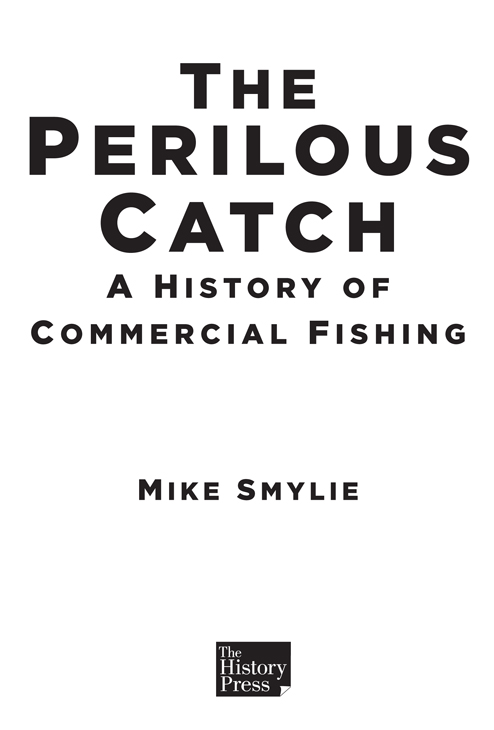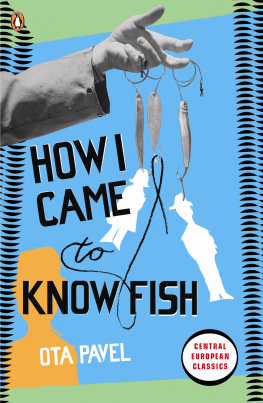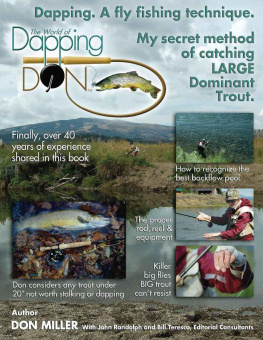
For Christoffer, Ana and Otis
However you look at it, fishins a dangerous occupation. At sea its the elements; the sea, the cold and the tiredness gets you. On land its the trudgery. For theres no place like being out at the fishin. Its in the blood, see. However you look at it, it always gets you one way or other.
Cruban Stirk
C ONTENTS
Imagine the scenario: being out in the North Sea off the east coast of Scotland in August, with dusk approaching, aboard a small open boat, the coastline a mere blot on the horizon. The sea is calm and theres an oily silence about it, with a slight breeze coming from the southwest. The boat, about 30ft in length, has five people aboard, all fishermen and resting, waiting to haul in the net in a few hours, hopefully full of the silver darlings. The presence of herring in the water is signalled by the gannets diving deep, and they keep a lookout for seals and other predators. As the blue hour comes, clouds build up from the east, hiding the full moon that earlier made its presence known and one of the fishers is alerted when he notices a slight shift in the wind direction. The same man points to a sudden reddening of the sky in the west and the wind again backs a few points to the east. Immediately a strong southeasterly wind picks up strength and the crew quickly start to haul in their net, not able to afford losing such a major piece of gear. The warning is apparent: it is time to seek shelter.
That was exactly the scenario on Friday, 18 August 1848. For all along the stretch of the east coast of Scotland, from Berwick-upon-Tweed right up to Wick in the north, these small boats had set out fishing that afternoon on what promised to be a lovely summer evening. But when an unexpected gale rose up around midnight, these fishers were desperately stranded. For, it being full moon with the spring tides, with the high water at midnight, the tide would be half through its ebb by the time they made the coast and with most of the harbours along this coast drying out, there was no shelter for them to return to. Those boats that did reach the 10 miles to the coast either chanced a landing on a lee shore, assuming they successfully passed through the breaking waves, hoping there might be help on the beach. The approach to any of the drying harbours was exacerbated by the fact that few had any lights to lead the boats in. Even though some boats managed to get home and into shelter not too long after midnight, most did not get away quick enough and the end result was carnage among those fleets from the various harbours and beach landings strung along this coast, numbering almost one hundred. One estimate gave 10,000 fishermen working on this coast. The Wick area alone, the town itself being termed the herring capital of Europe in 1865, had 3,500 fishermen working on 800 boats. In all a hundred lives were lost and 124 boats either wrecked or severely damaged. Although the harbours along the southern shore fared well, being in the lee of the storm, others did not. Peterhead Bay alone saw thirty-seven lives lost. Some boats survived by staying out at sea and a few Wick boats sailed northwards. But destruction littered the exposed coast and onlookers ashore could only stare in horror as the scenes unfolded in front of their eyes, sometimes only yards out to sea.
Of course this wasnt the first time such storms overcame fishing fleets. In 1806, the entire fishing fleet of three boats from the tiny settlement of Stotfield on the Moray Firth, now absorbed into the west side of Lossiemouth, was destroyed on Christmas Day while the boats open scaffie types were fishing just offshore. This is often referred to as the first such fishermens disaster on the east coast of Scotland. The storm took the boats down the Firth and away from home. Each boat had seven crew and they all simply disappeared in the vengeance of the storm that had taken them unawares, even though they had been fishing in sight of their homes in daylight. This tragedy took away every able-bodied man, leaving seventeen widows, forty-seven orphans and two old men behind.
Look around the coast and there are few areas that have not suffered similar fates. But the tragedy of 1848 did rouse the Scottish publics anguish and the government was forced into action when a 1,000-signature petition was delivered to the Lords of the Admiralty, along with a letter from provost, magistrates and town council of Wick. Eventually the Lords Commissioners of the Admiralty decided to instruct a special enquiry as to whether the wrecks occurred from the want of a harbour, from the use by the fishermen of a defective class of boats, or otherwise and Captain John Washington, RN, was chosen to head this.
Washingtons thoroughness could not be faulted. He held public meetings in Wick, Banff, Fraserburgh and Peterhead over a week in October 1848, taking oral evidence from fishermen, merchants, Fishery Officers, onlookers and harbour authorities, and later corresponded with a host of people. He also considered the design of vessels all over Britain and Ireland. In his report entitled Report on the Loss o f Life and Damage to Fishing Boats on The East Coast o f Scotland and now commonly referred to as the Washington Report, which stretches to over more than a hundred pages and includes drawings of boats and charts of existing harbours and suggested improvements to them, he castigates the British Fisheries Society, the design of the fishing boats and the poor state of the harbours. He also lists all the boats lost with their skippers. In all, the report makes fascinating reading. Fishing boats, in the general opinion of that part of the coast, were best open as this left more space to carry fish. Decks were thought to be superfluous and safety appears to have been low on the list of priorities for these fishermen. However, within ten years fishermen favoured decking over their boats, persuaded by evidence from the report and other authorities.
Following the Douglas Bay fishing disaster was another instance of a change in boat design, which attempted to make fishing a safer labour. This happened at the entrance to Douglas harbour on the night of 20/21 September 1787. A storm the previous year had demolished the old Douglas pier and its lighthouse and no repairs had been made although a temporary lamp had been installed on the ruins of the old quay. Four hundred boats set out that evening for the back fishing in the bay but when a southeasterly gale sprung up the boats were forced to return to the safety of the harbour. The entrance to the harbour was difficult in the dark and the lanterns along the beach were mistaken for the lamp at the end of the pier by many boats. One boat actually stuck the end of the pier and destroyed the post holding up the one lamp, making the situation even more critical. Boats were simply thrown ashore in the confusion and in the morning the enormity of the disaster became apparent: the beach and rocks were covered in wrecks and bodies were floating around the harbour. Some twenty-one fishermen lost their lives with somewhere in the region of fifty boats being wrecked.
Again it was the design of the boat that was partly to blame although common sense suggests the lack of a good light probably accounted more for the loss of boats. The older boats were of a squaresail type of boat imported from Norway ten centuries before. These scowtes , as they were called, were open vessels and a fierce debate followed regarding their suitability. The lack of a deck was the main fault and it wasnt long before decked boats, smacks with a cutter rig, appeared. However, within forty years, with the appearance of Cornish luggers, the fishermen turned away from the smacks in favour of the lug-rig.
Next page








